Day 15: Great-horned owl

A great-horned owl, Bubo virginianus, and her owlet. I was pretty excited about these. They might be the most widely distributed "true owls" (non-barn owls) in the Americas, but I have seen only a few in the wild ever, and certainly never a parent/owlet pair. If you're in the area, these two are (for the moment) residing at the Apache Junction Public Library. Go to the entryway, and look up and to your right, on the stucco ledge. If you see droppings, you're in the right area. Be respectful. If they're not there by the time you get out, word is they've been nesting there for a few years now, so try next year. (I'm now officially The Person Everyone Tells About These Things. Fun times!)

Day 16: Pied-billed grebe
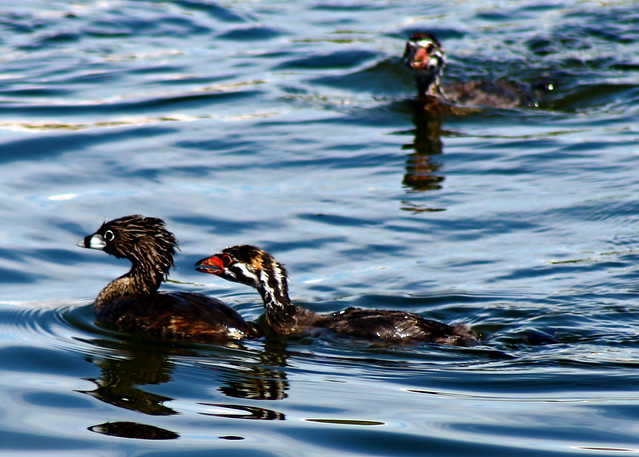
Pied-billed grebe, Podilymbus podiceps. A family! This is what I love about 1) photography and 2) taking my son on nature walks. Until I did those two things, these (and a million other water birds) were just "those water birds that aren't ducks, geese, or coots." I think knowing about coots still put us ahead of most people we encounter, but it's amazing how much variety is out there and how naturally you get to know the different kinds, if you just pay attention. Trust me. If there are any two people in the world worse at paying attention than my son and me, I've yet to meet them. But when we slowed down and looked around, there were the pied-billeds and hundreds of other species just waiting for us to get to know them, the better to facilitate both animal appreciation and pompous pedantry at those fools who can't even identify a coot.
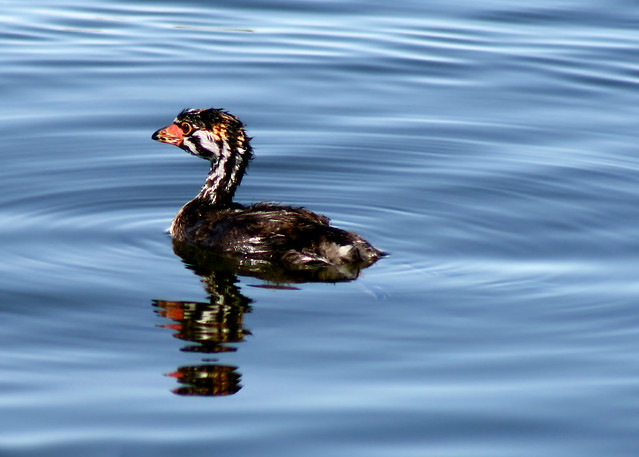
Day 17: Convergent lady beetle
It's kind of a family joke. When I was younger and obligated to play in baseball and softball games, and other kids were obliged (to their perpetual chagrin) to include me on their teams, I was exiled to the outfield to minimize my damage. (There was a brief but unfortunate stint as a pitcher, and an even worse turn as a catcher; both of which ended with me getting injured and berated by my dad/coach. I prefer not to think about those times.) While in the outfield, I could survey the whole game. Our team yelled to each other, flashed signals and looks. The other team screamed and cheered for whoever was at bat. Dirt flew. Bats cracked against balls. People did whatever it is people do when they're able to competently play team sports. My dad yelled himself hoarse. Everyone went nuts.
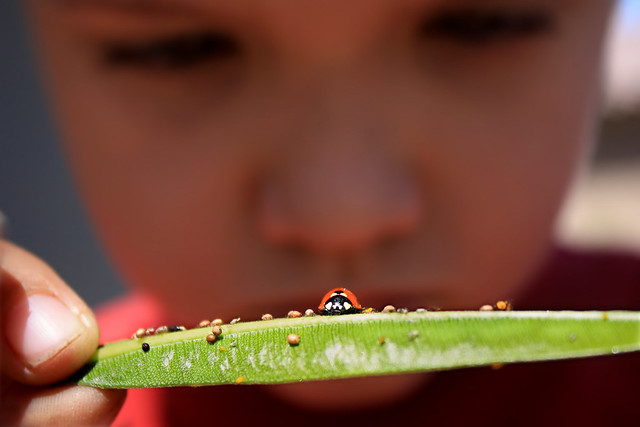
And I ... collected ladybugs.
It really wasn't the best thing for me. The outfield was swarming with ladybugs. I was so excited the first time I discovered them. The next time, I studied and counted them, reckoning how best to get a few to take safely home. The third time, I smuggled a container to the field, in which I'd drilled tiny air holes.
I missed dozens and dozens of balls. It never occurred to me to be on my toes, despite my dad yelling for me to GET YOUR DANG HEAD IN THE GAME. I mean, what? Pay attention the whole time? I think the other team usually had one girl who was too prissy to really play, so it balanced out.
These guys are known variously as ladybug, ladybird, ladyclock, lady cow, lady fly, and probably some I'm missing, but the preferred name used by scientists seems to be lady beetle. There are various species of ladybugs in Arizona (and throughout the world -- there are over 450 species in North America alone), but the most common around here is the convergent lady beetle, Hippodamia convergens. They are so named because they, well, converge, in huge groups, to hibernate.
Lady beetles lay their eggs early around here, and we've already got the red-and-black larvae inching about our
Day 18: Tree lizard
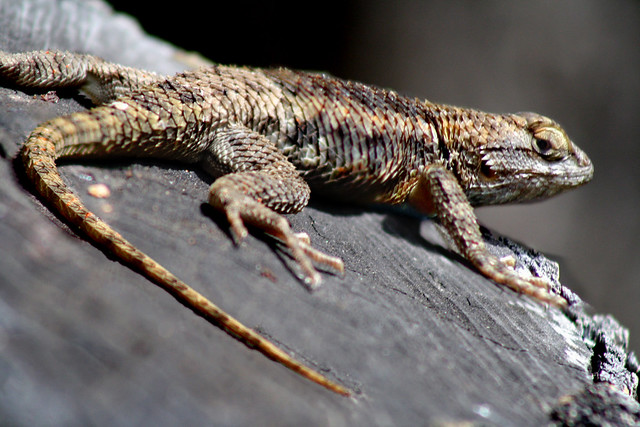
Tree lizards, or Urosaurus ornatus, are also called ornate tree lizards, and they look much more ornate from beneath, where you can see the vivid blues and orange-reds on their bellies and throats. They love our yard.
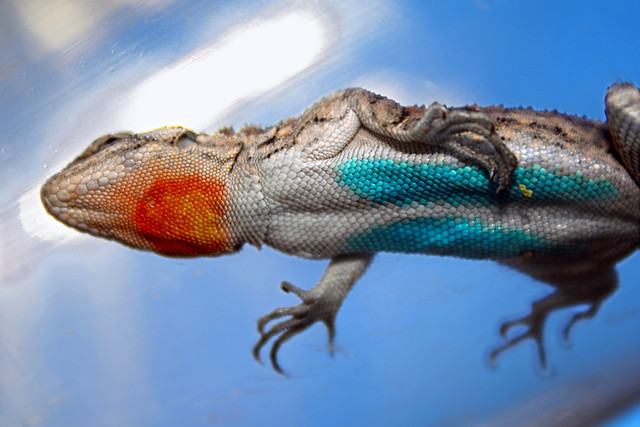
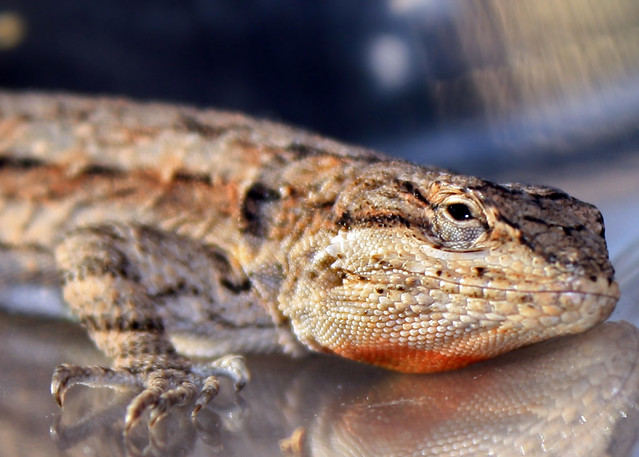
See? Look how happy he is.
Day 19: Blue dasher
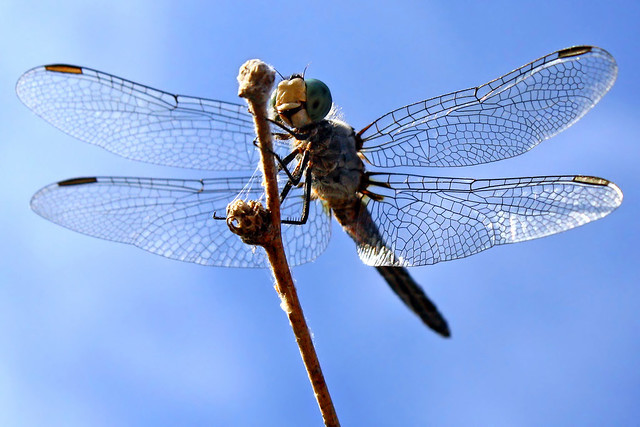
The first dragonfly I got to really know was definitely the blue dasher, Pachydiplax longipennis. (OK. Go ahead. My husband and son laugh every time.) Super-plentiful at the Gilbert Riparian Preserve and near water holes everywhere around my home in central Arizona, and a little less wary than some other dragonflies. (Roseatte skimmers, for example. Those guys are like Bugs Bunny to my Elmer Fudd.) They're one of the first dragonflies to return around here, and we're already spotting them.
Day 20: Mourning dove
Ah, my love-hate relationship with mourning doves.
No; that's not fair. I don't hate them. It's their various leavings, invariably on my car, that I'm not so crazy about. Plus, they always used to seem so boring.
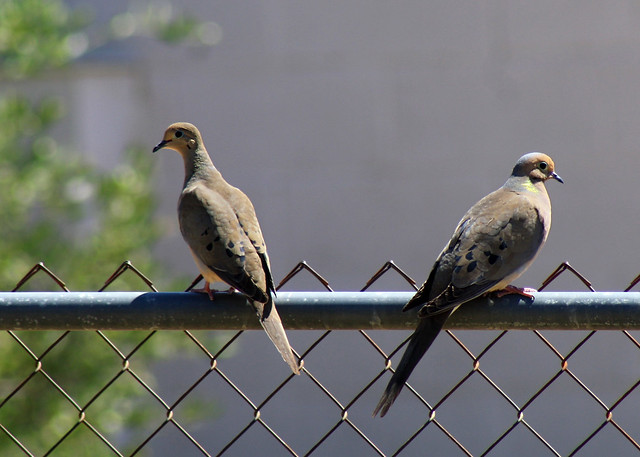
I know, I know. For an animal lover -- one who extols the virtues of decidedly uncuddly creatures -- that's harsh. Doves are cute, innocent, pretty-sounding. They have these perfect little tapered bodies. They have compact, precious faces with little obsidian-droplet eyes. They're universal symbols of peace, for crying out loud. Innocence. Purity. Grace. Nature's fragility. You'd think I'd eat that stuff up.
Meh. They aren't cool or particularly clever-seeming, like raptors, owls or corvids. They aren't iconic, like Arizona's roadrunner or even Gambel's quail. They don't let you come that close. They're drab brown and gray, not striking like cardinals or flycatchers or blackbirds. They're not rare. They crap all over my car. I always guessed that was their most prominent characteristic.
Slowly, they've wormed their way into our "cool animals" group. (Which, honestly, includes pretty much any metazoan ever in existence.) We watch them glide between the houses nearly every evening. We rescued a mourning dove. I had to hold it briefly, and I felt the tiny, rapid heartbeat beneath its warm, almost liquid-soft breast feathers. It was amazing. It fit in my cupped hand, and it spread to fill my palm like a nest as I carried it. The dove just sat there, but it looked at me, all pupil, like looking was an Olympic sport. The thing was infinitely fragile, yet strong somehow too. Wild.
But they're still stupid shit dispersers.
Day 21: Pipevine swallowtail

I've loved these guys since my son first discovered the red-black spiny caterpillar, and the adults are gorgeous. They're just so darn hard to pin down and photograph. Pipevine swallowtail, Battus philenor -- found in much of the United States, but especially in southern half, and throughout Mexico, pretty much anywhere there are plants they like and a warm-enough climate -- flutter constantly from plant to plant for nectar, and flutter even once they've landed. Still, they're gorgeous enough that I keep trying.
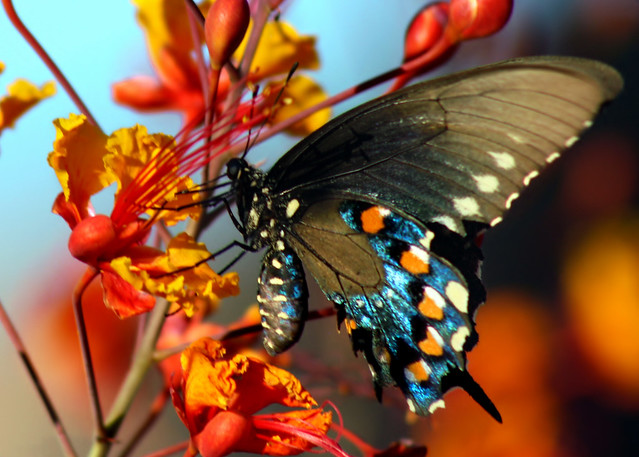
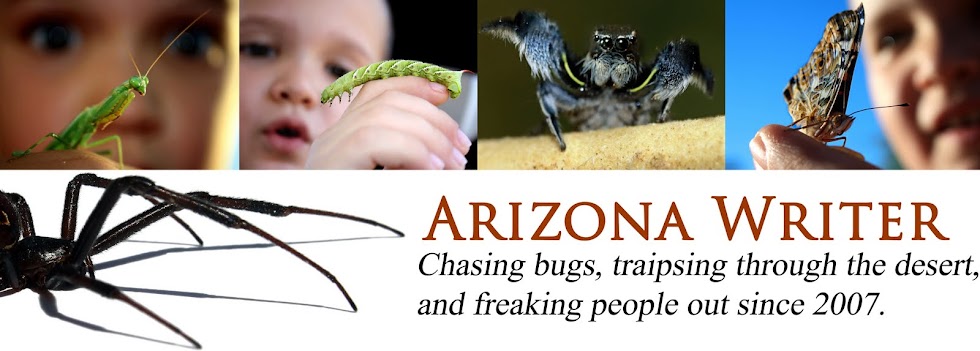
7 comments:
They have the pipevines in the butterfly exhibit of at the Desert Botanical Gardens! I was really impressed by the exhibit when I was there over the weekend. Have you ever been?
Beautiful photography.... I simply LOVE the first shot of the two horned owls!!
my photography blog
Fabulous photos. I have Dutchman's Pipevine in our garden for the sole purpose of attracting Pipe vine Swallowtails. I love that dragonflywoman is hanging out here.
dragonflywoman: I have been, but not in a year or two. I must get out there post-haste. I didn't know they had pipevines; thanks!
Linda: Thank you! I was pretty proud of capturing the owls.
growfamilygrow: Thanks! I need to plant something besides weeds, though they seem to be pretty great at attracting aphids and lady beetles. And yeah; I love her hanging out here too! Nature nuts of Arizona unite. :-)
LOVE this! That lizard is so cool from the bottom, and he looks pretty content in that third picture too. Maybe when the summer arrives, I'll try and get a species a day up here. Such a great idea Kim!
Here are some more AZ Coccinellidae (that's what we science geeks really like to call them)
http://www.flickr.com/photos/margarethebrummermann/3909961081/sizes/o/in/set-72157622208254771/
love the idea of your one-a-day!
Kirsten: Thanks! I did love the lizard's grin.
Margarethe: Ooh, great image, and I'll remember the proper term. Yep, we definitely have convergent ones.
Post a Comment